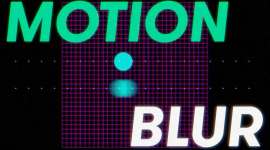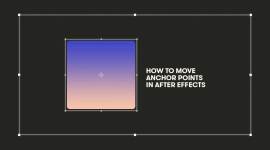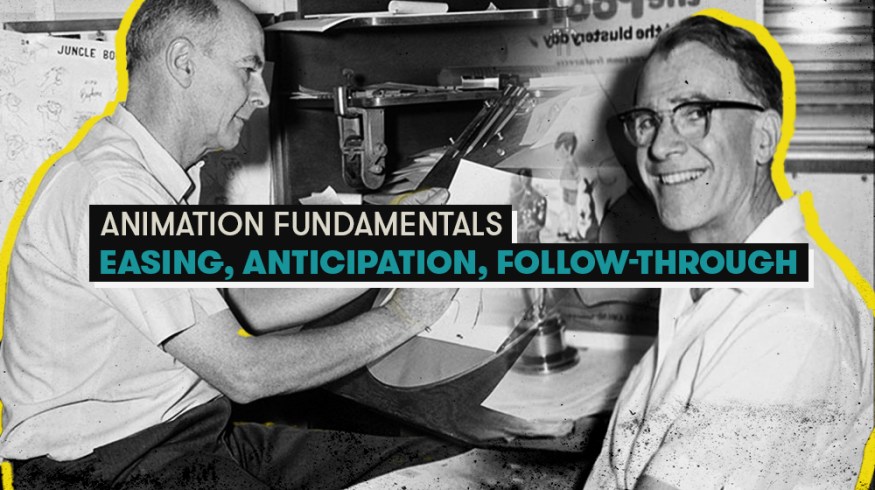
Animation Fundamentals: Easing, Anticipation, and Follow Through
Implementing the fundamentals of animation is no easy task. Here’s a quick guide to understanding and applying the basics in animation.
Trying to mimic everyday motion requires the utmost attention to detail. Because there’s so much to follow, you’d think there would be some sort of guide, right?
Good news. Disney animators Ollie Johnston and Frank Thomas put together twelve animation fundamentals in their book The Illusion of Life.

When I first studied these fundamentals, I realized that there were so many details in life I never saw. Since we’re so familiar with all the motion in our day-to-day lives, we become blind to the details. For example, try drawing a sequence of a squishy ball bouncing off the floor. Surely, you’ve seen this happen hundreds, if not thousands, of times before. But, the majority of people will get a lot of obvious details wrong. It’s kind of like asking someone to draw a bike. Despite it being such a familiar and common object, almost everyone gets it wrong.
Easing

Nothing moves in a linear fashion. As an object moves, it accelerates and decelerates, also called easing. In animation, you’ll have more frames of an object condensed in a smaller area at the beginning and end of the movement. By looking at the example above, you can see how unnatural linear movement is. The way an object is eased can convey different feelings, but a standard curve is what normal movement generally looks like.
Anticipation
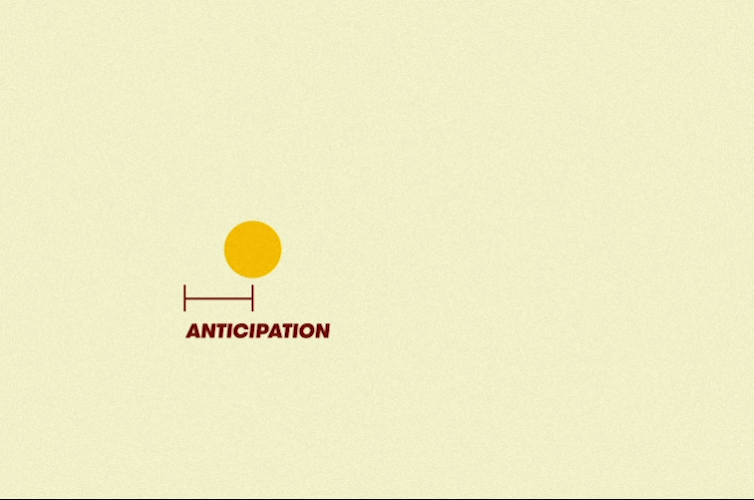
Anticipation is basically the action before the main action. You can see an example of anticipation in Pixar Studio’s opening animation. When the lamp shrinks down to get ready to jump on the letter, that hesitation is anticipation. Without the buildup of energy, the proceeding motion wouldn’t feel natural or believable. Anticipation is definitely one of the hardest fundamentals to get right. Some animators don’t put in enough anticipation and others make it a bit too dramatic. Smoothing out this animation is going to take some time, but you’ll instantly recognize when you get it right. It’s all about timing. So, if you tweak one area, another will need fixing. You have to blend the animation as best you can.
Follow-Through
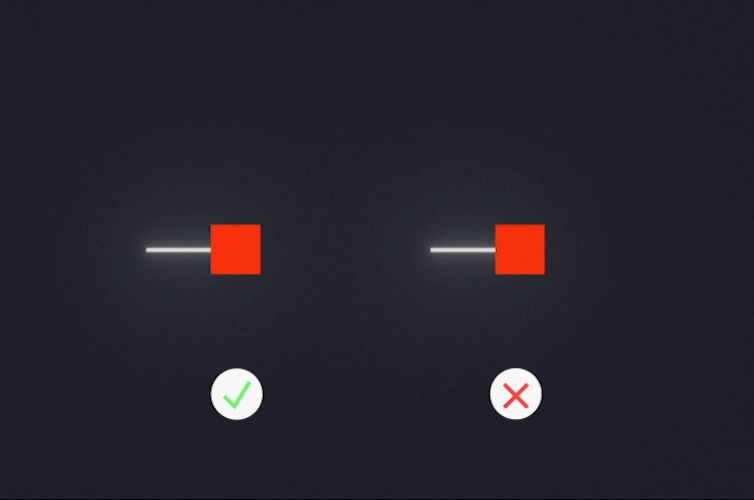
Follow-through and anticipation are sort of the same thing, but on opposite ends of the action. Inertia is introduced with follow-through. When you’re animating a moving object, and it comes to a quick stop, there’s still movement after. Think about when you pull the front brake on a bike. The bike will stop, but the person riding will not. Follow-through helps your object obey the laws of physics. The object can bend, stretch, and jiggle to indicate this motion. You can use this to help give hints at what material your object is made of.
Final Thoughts
Implementing these fundamentals is no easy task. Every time I work on an animation, I always have to go back and smooth out motion on and between keyframes. I never get it right on the first, second, or even third try. I’ll be totally honest, I can spend hours trying to get one movement right. These types of techniques take a lot of trial and error to get right. Just remember to stay patient and to understand that your animation will always be a work in progress.
One thing people don’t keep in mind is that these fundamentals apply to all motion media. From 3D to cell animation, think of the twelve fundamentals of animation as the bible for motion design.
For more on motion design, check out these articles:
- Create a Video Conference Call Glitch Effect in After Effects
- Tips for Animating User Interface (UI) in After Effects
- How to Get Started with Motion Capture Right Now
- 10 After Effects Plugins Every Motion Designer Should Have
- Create Wiggly Text and Animations Using the Line Boil Effect
Cover image via IMDb.



